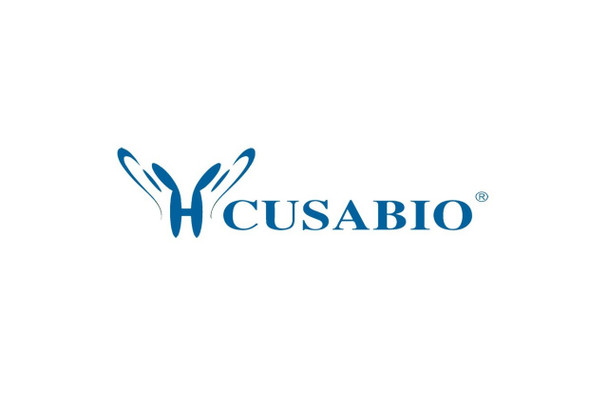Cusabio Human Recombinants
Recombinant Human Beclin 1-associated autophagy-related key regulator (ATG14) | CSB-EP741052HU
- SKU:
- CSB-EP741052HU
- Availability:
- 3 - 7 Working Days
Description
Recombinant Human Beclin 1-associated autophagy-related key regulator (ATG14) | CSB-EP741052HU | Cusabio
Alternative Name(s): Autophagy-related protein 14-like protein Short name:Atg14L
Gene Names: ATG14
Research Areas: Others
Organism: Homo sapiens (Human)
AA Sequence: MASPSGKGARALEAPGCGPRPLARDLVDSVDDAEGLYVAVERCPLCNTTRRRLTCAKCVQSGDFVYFDGRDRERFIDKKERLSRLKSKQEEFQKEVLKAMEGKWITDQLRWKIMSCKMRIEQLKQTICKGNEEMEKNSEGLLKTKEKNQKLYSRAQRHQEKKEKIQRHNRKLGDLVEKKTIDLRSHYERLANLRRSHILELTSVIFPIEEVKTGVRDPADVSSESDSAMTSSTVSKLAEARRTTYLSGRWVCDDHNGDTSISITGPWISLPNNGDYSAYYSWVEEKKTTQGPDMEQSNPAYTISAALCYATQLVNILSHILDVNLPKKLCNSEFCGENLSKQKFTRAVKKLNANILYLCFSQHVNLDQLQPLHTLRNLMYLVSPSSEHLGRSGPFEVRADLEESMEFVDPGVAGESDESGDERVSDEETDLGTDWENLPSPRFCDIPSQSVEVSQSQSTQASPPIASSSAGGMISSAAASVTSWFKAYTGHR
Source: E.coli
Tag Info: N-terminal 10xHis-tagged and C-terminal Myc-tagged
Expression Region: 1-492aa
Sequence Info: Full Length
MW: 60.3 kDa
Purity: Greater than 90% as determined by SDS-PAGE.
Relevance: Required for both basal and inducible autophagy. Determines the localization of the autophagy-specific PI3-kinase complex PI3KC3-C1 (PubMed:18843052, PubMed:19050071). Plays a role in autophagosome formation and MAP1LC3/LC3 conjugation to phosphatidylethanolamine (PubMed:19270696, PubMed:20713597). Promotes BECN1 translocation from the trans-Golgi network to autophagosomes (PubMed:20713597). Enhances PIK3C3 activity in a BECN1-dependent manner. Essential for the autophagy-dependent phosphorylation of BECN1 (PubMed:23878393). Stimulates the phosphorylation of BECN1, but suppresses the phosphorylation PIK3C3 by AMPK (PubMed:23878393). Binds to STX17-SNAP29 binary t-SNARE complex on autophagosomes and primes it for VAMP8 interaction to promote autophagosome-endolysosome fusion (PubMed:25686604). Modulates the hepatic lipid metabolism (By similarity).
Reference: "The DNA sequence and analysis of human chromosome 14."Heilig R., Eckenberg R., Petit J.-L., Fonknechten N., Da Silva C., Cattolico L., Levy M., Barbe V., De Berardinis V., Ureta-Vidal A., Pelletier E., Vico V., Anthouard V., Rowen L., Madan A., Qin S., Sun H., Du H. Weissenbach J.Nature 421:601-607(2003)
Storage: The shelf life is related to many factors, storage state, buffer ingredients, storage temperature and the stability of the protein itself. Generally, the shelf life of liquid form is 6 months at -20?/-80?. The shelf life of lyophilized form is 12 months at -20?/-80?.
Notes: Repeated freezing and thawing is not recommended. Store working aliquots at 4? for up to one week.
Function: Required for both basal and inducible autophagy. Determines the localization of the autophagy-specific PI3-kinase complex PI3KC3-C1
Involvement in disease:
Subcellular Location: Cytoplasm, Endoplasmic reticulum membrane, Peripheral membrane protein, Preautophagosomal structure membrane, Peripheral membrane protein, Cytoplasmic vesicle, autophagosome membrane, Peripheral membrane protein
Protein Families: ATG14 family
Tissue Specificity:
Paythway: Autophagy-animal
Form: Liquid or Lyophilized powder
Buffer: If the delivery form is liquid, the default storage buffer is Tris/PBS-based buffer, 5%-50% glycerol. If the delivery form is lyophilized powder, the buffer before lyophilization is Tris/PBS-based buffer, 6% Trehalose, pH 8.0.
Reconstitution: We recommend that this vial be briefly centrifuged prior to opening to bring the contents to the bottom. Please reconstitute protein in deionized sterile water to a concentration of 0.1-1.0 mg/mL.We recommend to add 5-50% of glycerol (final concentration) and aliquot for long-term storage at -20?/-80?. Our default final concentration of glycerol is 50%. Customers could use it as reference.
Uniprot ID: Q6ZNE5
HGNC Database Link: HGNC
UniGene Database Link: UniGene
KEGG Database Link: KEGG
STRING Database Link: STRING
OMIM Database Link: OMIM









